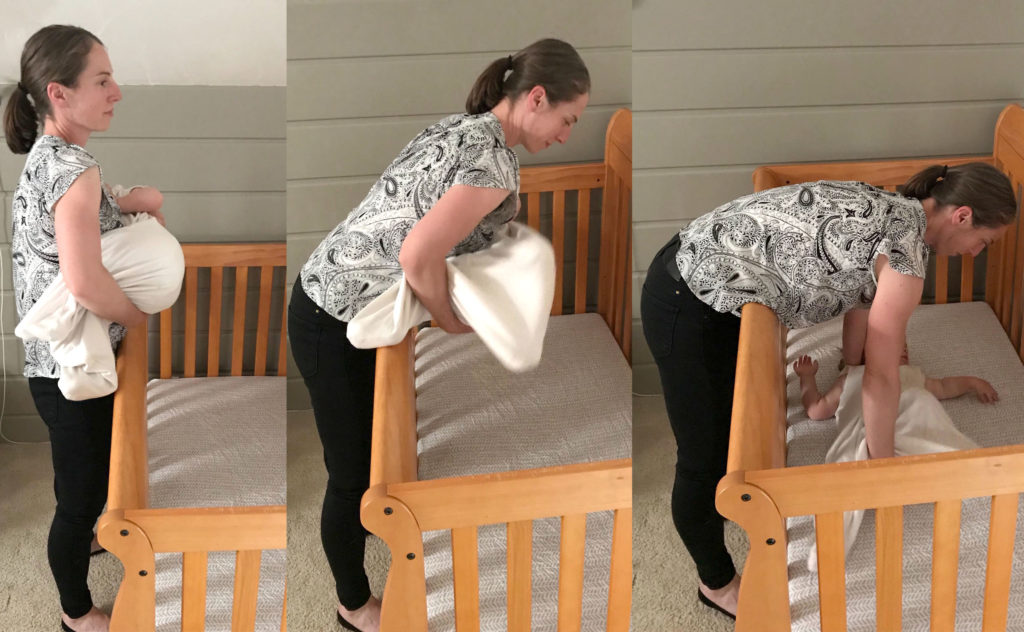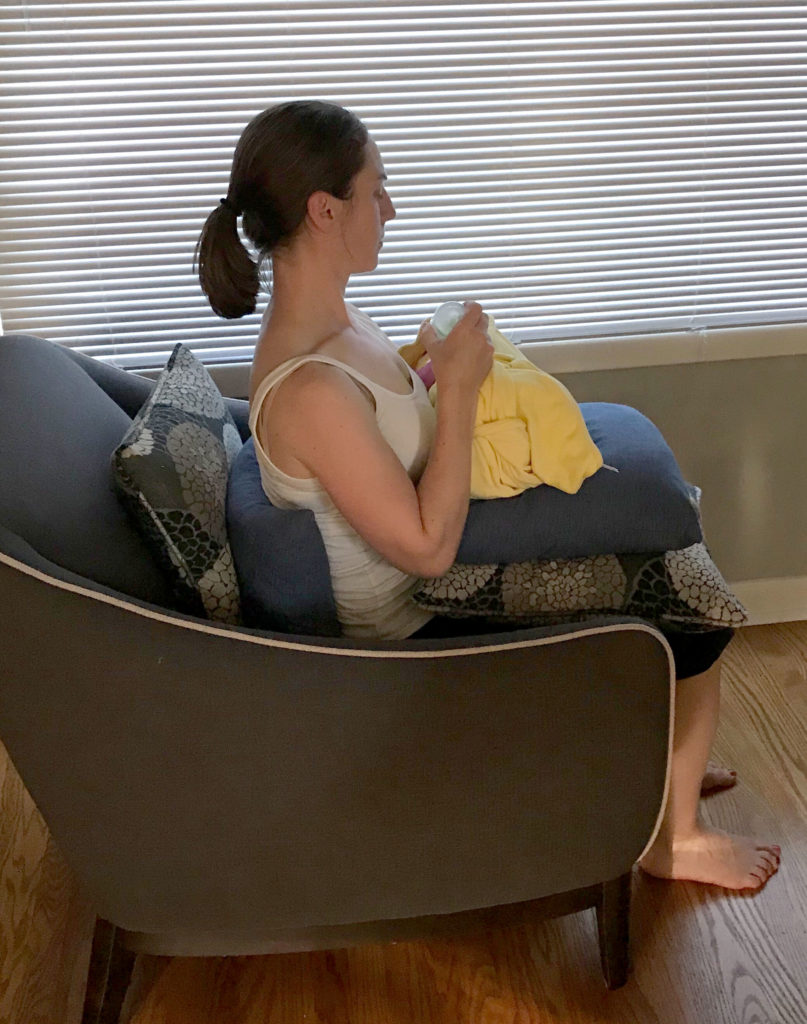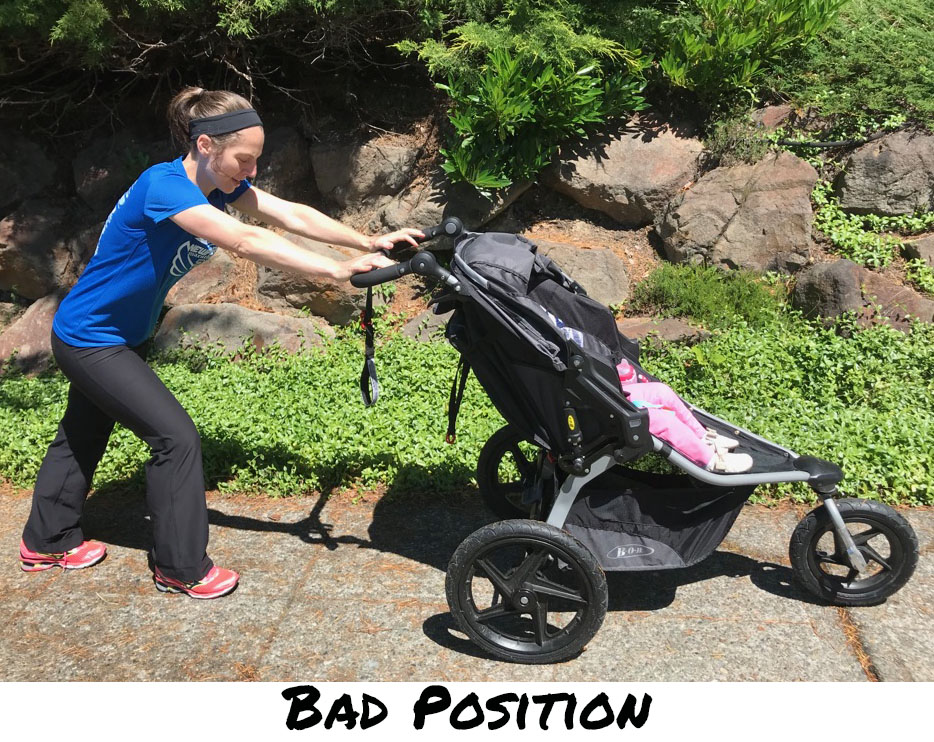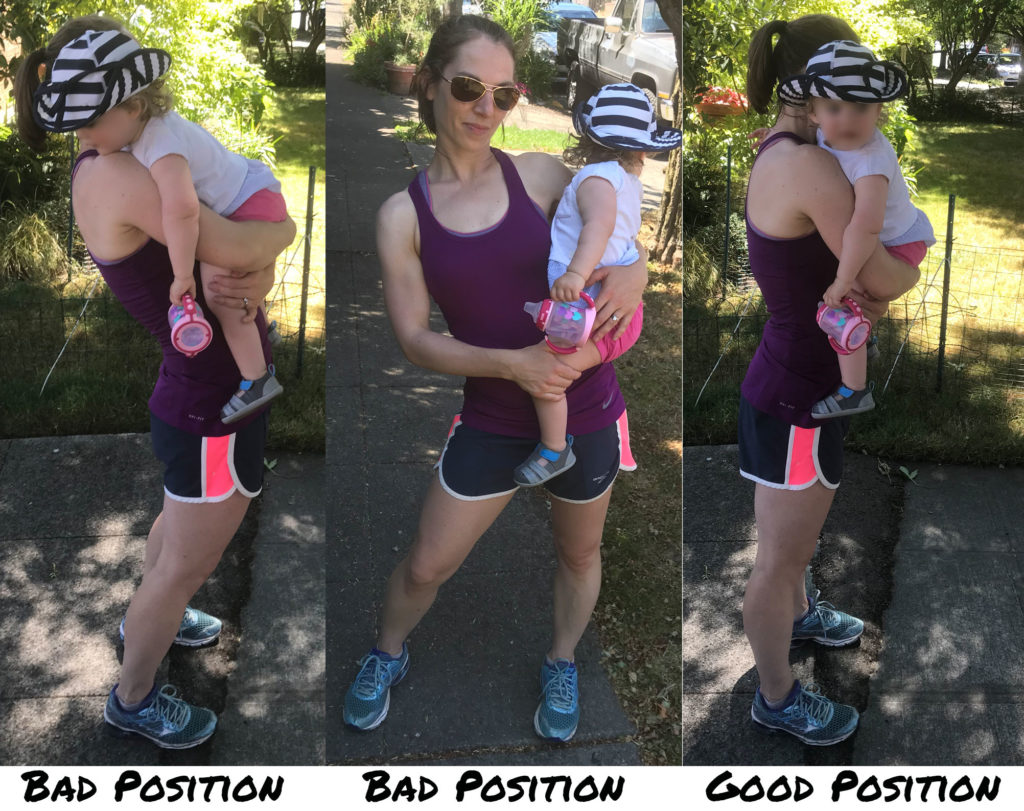Body Mechanics with Babies and Toddlers
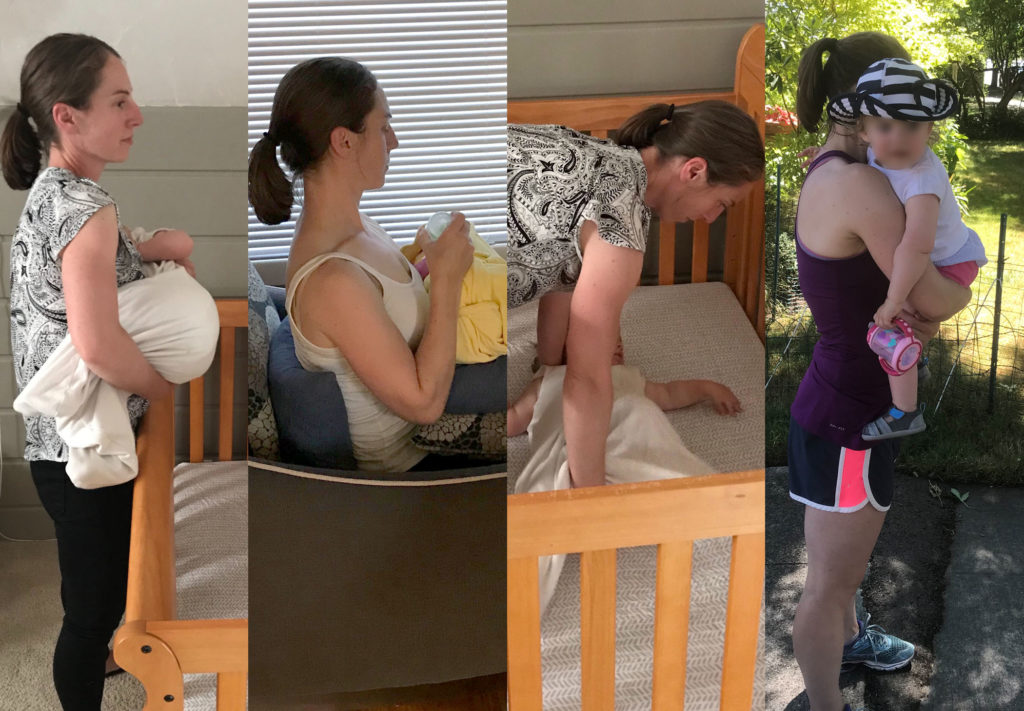
By Alexis Eusterbrock, DPT, COMT, OCS, Pelvic Rehab Provider
Whether you are a new parent, a grandparent, nanny, or other caregiver, taking care of infants and toddlers can be hard physical work. Protecting your body while providing for a child’s needs can often be very challenging and result in a number of overuse injuries such as low back pain, neck pain, upper back pain, pelvic pain, and wrist and hand pain. Low back pain and pelvic girdle pain are very common complaints of new moms. In fact, the presence of low back pain and pelvic girdle pain before or during pregnancy is a strong predictor of the incidence of continuous or recurrent symptoms postpartum 1,2. Here are a few tips to guide you to help maintain solid body mechanics with common movements required when caring for young children.
The Crib
When baby is small and not yet rolling or sitting up independently, use a bassinet attachment on a pack n play, raise the mattress in the crib, or use a separate sleeper that can be raised to at least knee height. This will help to reduce the amount of forward bending (rounding of your back) to put baby to sleep and pick baby up out of the crib. Once baby is more mobile and you need to lower the crib mattress for safety, think about these mechanics to minimize strain on your back.
- Keep your back straight and hinge from your hips. This means your butt should be back, your chest down, and your back straight, no rounding (see angle on the second image below).
- Use a stool or book if you are short to improve ability to use a hip hinge.
- Keep your body as close to the crib as possible and move baby closer to you before lifting or lowering
- Keep baby hugged close into your body vs lifting or lowering with arms outstretched
- Use your legs, not your back and hinge from your hips as you lower and lift baby out of the crib
Nursing or Bottle Feeding
Maintaining good spine posture while breast or bottle-feeding can be very challenging. Try setting up a station in your home that you know will have all of the equipment needed to keep your back well supported while feeding your little one.
- Place pillows behind your back to keep your back straight and prevent slouching
- Place regular or nursing pillows on your lap to bring baby up to the height of your elbows or breast, then rest the majority of baby’s head and body on the pillows with a minimal amount of weight in your arms
- Enjoy looking at baby, but do so through using your eyes, not rounding your whole upper body down to baby
Pushing the Stroller
Babies and toddlers love to get outside and enjoy fresh air and the scenery as much as we do, but as beneficial as this can be for our health, it is very easy to get hurt if you aren’t mindful of your movement and position.
- Place the handle of the stroller at elbow height or slightly below
- Keep your elbows at your sides and do not outstretch your arms, this is especially important when walking up hill
- Use your legs to propel the stroller forward, not your arms and upper body
- Try to keep your head stacked over your neck, not ahead of your body (ears in line with shoulders)
- Keep your thumbs next to your fingers on the top of the handle versus tucking under the handle to avoid thumb or wrist injury
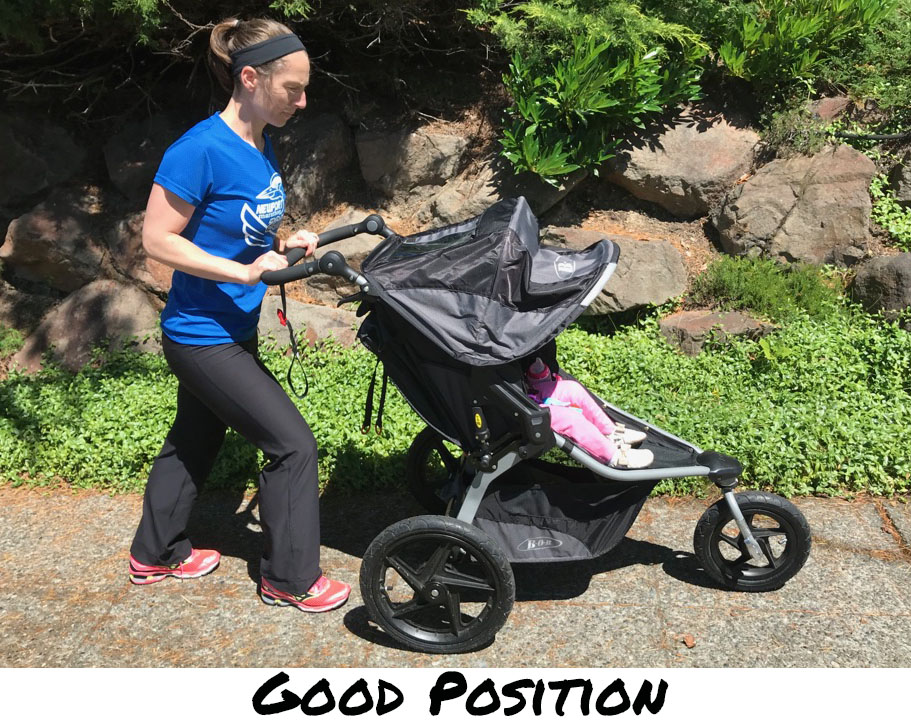
This is one of the trickiest movements to maintain good body positioning especially as baby grows and gets longer and heavier.
- Keep baby as close to you as possible
- Hold baby in front of your body vs to the side when possible
- If you need to hold baby at your side, keep your hips under your shoulders, don’t jut out those hips!
- Keep your back straight with ribs stacked over your pelvis, don’t let your shoulders drift behind your hips and extend your low back
- Use a front or back carrier if needing to carry baby for long periods of time
References
- Ostgaard HC, Andersson GBJ. Postpartum low-back pain. 1992; 17(1):53-55.
- Bergstrom C et al. Pregnancy-related low back pain and pelvic girdle pain approximately 14 months after pregnancy – pain status, self-rated health and family situation. BMC Pregnancy and Childbirth. 2014; 14:48.

